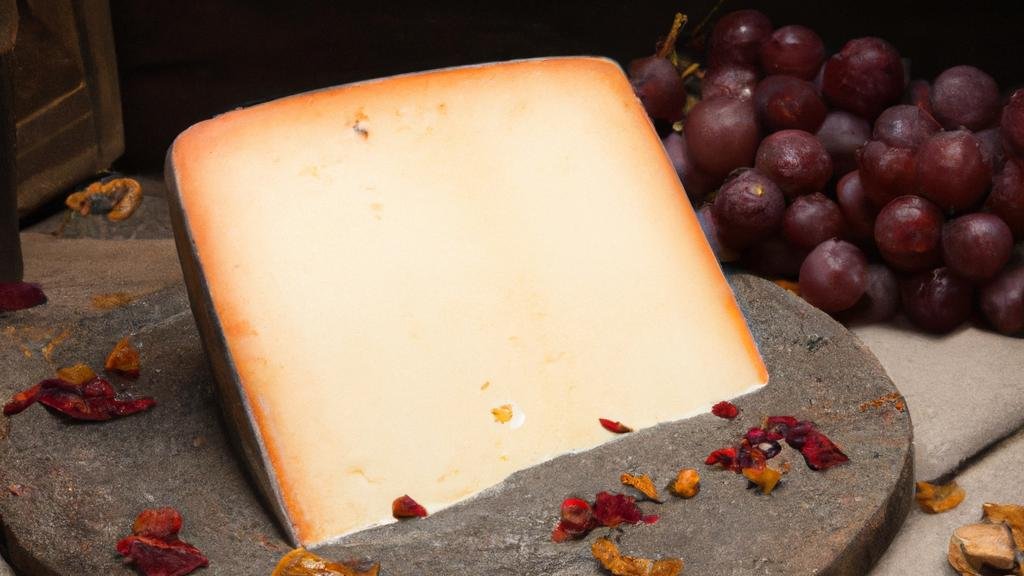
Unwrapping the Intricacies of Bulgarian CheeseBulgarian cheese, encapsulating the soul of its homeland’s pastoral heritage, is beyond just a dairy product; it is an embodiment of a centuries-old culinary legacy. Often underrated on the global gastronomic map, this unique cheese merits a place in the pantheon of the world’s finest cheeses. Primarily, there are two kinds of Bulgarian cheeses that have achieved notable recognition: Kashkaval and Bulgarian White Cheese. Each has a distinct taste and texture, primarily influenced by the regional climates, the type of milk used, and specific manufacturing processes. - Kashkaval: A semi-hard, yellow cheese made either from cow or sheep milk, Kashkaval is celebrated for its versatility. Its subtle flavor and firm yet pliable texture make it ideal for a wide variety of culinary uses. Whether it’s sliced for sandwiches, melted into a gratin, or finely diced for salads, Kashkaval seamlessly amalgamates into different dishes.
- Bulgarian White Cheese: The epitome of Bulgarian cheese, Bulgarian White Cheese, also known as ‘Sirene’, is comparable to the widely-appreciated Greek Feta, but its taste profile offers a unique blend of tang, saltiness, and creaminess. Traditionally produced from sheep’s milk and sometimes blended with goat’s milk, the authenticity of this cheese lies in its distinct process of brine-ripening which imparts to it a crumbly texture and a unforgettable savoury aftertaste. This is mostly served as a table cheese, as an accompaniment to traditional Bulgarian salads or as a stuffing for pastries.
Declared in accordance with the Protected Designation of Origin (PDO) status, Bulgarian cheese production rigorously adheres to geographic-specific processes, ensuring that the final product is an authentic reflection of its terroir. The intricacy is not merely in the unparalleled taste of Bulgarian cheese but also in the painstaking preservation of their traditional production methods, translating the essence of the land into a delectable experience.Also worth mentioning is that, beyond just being a culinary delight, Bulgarian cheese is a nutritional powerhouse. It is rich in probiotics, beneficial for gut health, high in protein and calcium, and contains important vitamins and minerals – an indulgence you can definitely feel good about.
Test Your Knowledge on Bulgarian Cheese from Israel
Join our interactive cheese detective journey. Recognize the importance of both the Bulgarian roots and Israeli influences on making this unique cheese. Deep dive into the cheese-making process, its flavor, consistency, and enjoy the learning during the quiz.
Exploring the Intricate World of Bulgarian Cheese: Its Ingredients, Properties, and Varieties
Known for its rich flavors, diverse profiles, and strong connection to Bulgarian traditions, Bulgarian cheese offers a unique and authentic culinary experience. Historically, the Bulgarians are amongst the first civilizations to have invented and developed cheese making dated as far back as 3000 BC. This long-standing tradition significantly contributes to the uniqueness of Bulgarian cheese in terms of its taste, texture, and aroma. Over the centuries, this cheese has evolved, served not just as a food item, but also a key component of numerous traditional recipes and a symbol of native culture.

Primarily, Bulgarian cheese is classified into two main types: the Bulgarian White Cheese (‘Sirene’) and the Bulgarian Yellow Cheese (‘Kashkaval’). ‘Sirene’, as its name suggests, has a white color, crumbly texture, and slightly tangy flavor. Traditionally, it is made from sheep’s milk, but other variations using cow’s or goat’s milk are also common. The cheese is usually cut into slices and served with salads, on bread, or used as a topping in pies. ‘Kashkaval’, on the other hand, is the Bulgarian version of cheddar cheese and is often produced from cow’s or sheep’s milk. It has a semi-hard texture and is characteristically smooth, creamy and has a mildly sharp taste. It is widely used in pastries and is also an ideal cheese for grilling.
Bulgarian cheese is highly prized for its distinct flavors, but its nutritional value should not be overlooked. It is rich in protein, calcium and phosphorous, providing essential nutrients for bone health. Its high probiotic contents, particularly in ‘Sirene’, promote gut health, helping maintain a healthy digestive system. The cheese also contains a good amount of vitamin B12, beneficial for nerve function and the production of red blood cells. However, as with most cheese varieties, Bulgarian cheese is high in fat and should be consumed in moderation.
Bulgarian cheese can be enjoyed on its own or incorporated into a variety of dishes. Here are a few recipe suggestions where Bulgarian cheese takes the center stage:
- Sirene Po Shopski (Bulgarian Baked Cheese)
- Banitsa (Bulgarian Cheese Pie)
- Kashkaval Pane (Breaded Kashkaval)
- Tarator (Cold Yogurt and Cucumber Soup)
Cheese enthusiasts and gourmets alike could never go wrong with the intricate blend of taste, texture, and aroma that Bulgarian cheese brings. Whether in traditional Bulgarian recipes or innovative culinary creations, this cheese definitely shines with authenticity and gastronomic delight.
Bulgarian Cheese: A Taste of Rich Balkan Tradition
Bulgaria may not be the first country that comes to mind when thinking of cheese, but this beautiful Balkan nation has a rich tradition of cheese-making that dates back centuries. Nestled between Greece and Turkey, Bulgaria boasts a diverse landscape that is ideal for dairy farming, with lush pastures and temperate climates. It is in this picturesque setting that Bulgarian cheese is crafted, using methods and recipes passed down through generations.
One of the most famous varieties of Bulgarian cheese is sirene, a white brined cheese that has been a staple in Bulgarian cuisine for centuries. Made from sheep’s or cow’s milk, sirene is renowned for its crumbly texture and salty flavor. It is often enjoyed as a standalone snack or used as a filling in traditional Bulgarian dishes like banitsa (a savory pastry) or shopska salad (a fresh vegetable salad).
Another notable Bulgarian cheese is kashkaval. Similar to Italian provolone or Greek kasseri, kashkaval is a semi-hard cheese with a smooth and buttery texture. It is typically made from cow’s milk and is commonly used in cooking, especially in dishes like grilled cheese sandwiches or fried cheese appetizers. Kashkaval also comes in various flavors, including smoked and spicy, adding an extra dimension to its versatility.
The cheese-making process in Bulgaria relies on traditional methods and an unwavering commitment to quality. Farmers take pride in their livestock, ensuring that the animals are well-cared for and produce the best milk possible. Skilled cheesemakers then transform this milk into high-quality cheese using time-honored techniques. The result is a range of cheeses that exude authenticity and reflect the unique flavors of the Bulgarian terroir.

Key Points:
- Bulgaria has a rich tradition of cheese-making and boasts a diverse landscape that is ideal for dairy farming.
- Sirene is a famous Bulgarian cheese known for its crumbly texture and salty flavor.
- Kashkaval is a versatile semi-hard cheese commonly used in cooking.
- Bulgarian cheese is made using traditional methods, prioritizing quality and authenticity.
Facts and figures
- Israel, home to many Bulgarian immigrants, has adopted their traditional cheese-making techniques to create unique Bulgarian cheese.
- Bulgarian cheese made in Israel is typically made from cow or sheep milk.
- Bulgarian cheese is widely available and loved in the Israeli market.
- This cheese enjoys a long shelf life due to its brine preservation method.
- Good, unprocessed Bulgarian cheese is known for being semi-hard and remarkably tangy.
- This cheese complements many dishes and adds a particular flavor to salads and pies.
- Bulgarian cheese often gets confused with feta but offers a distinct and stronger flavor.
Delving into the Delectable World of Bulgarian Cheese: Exquisite Recipes to Savor
Bulgarian cheese, known as ‘sirene,’ is akin to the heart and soul of traditional Bulgarian cuisine. Derived primarily from sheep’s milk, it presents an intricate balance of tangy and salty flavours. Characterized by its crumbly texture and white color, Bulgarian cheese often resembles feta cheese but bears a distinctive taste that’s enticingly vibrant. The star of popular Bulgarian dishes, this cheese has the knack to transform a simple dish into an ambrosial feast. Peering through the lens of a cheesemonger, let us explore a couple of recipes that incorporate this exquisite element.
1. Bulgarian Style Banitsa (Cheese Pastry)
Banitsa, a traditional Bulgarian dish, is a savory cheese pie basking in its rustic flavors. The unique melange of Bulgarian cheese and the flaky pastry gives this dish a tantalizing allure. Made using traditional ingredients like Bulgarian cheese, eggs, filo pastry, and butter, Banitsa is an easy-to-cook dish that carries an explosive flavor profile.
Ingredients:
- 300 grams of Bulgarian cheese,
- 3 eggs,
- 1 pack of filo pastry (450 grams approx.),
- 125 grams of unsalted butter, melted.
Start by combining the eggs and crumbled Bulgarian cheese in a bowl. Unroll the filo pastry, butter each sheet, then layer it in a suitable dish. Spread the cheese and egg mixture evenly, layer the rest of the filo on top, and drizzle with remaining butter. Bake it at 200° C for about 40 minutes or until golden-brown. Serve it fresh from the oven to experience the interplay of warm, crusty pastry and melted cheese.
2. Shopska Salata (Bulgarian Cheese Salad)
Shopska Salata, also known as Bulgarian cheese salad, is a typical Balkan cuisine that embraces the freshness of vegetables combined with the vibrant flavors of Bulgarian cheese.
Ingredients:
- 4 ripe tomatoes,
- 1 cucumber,
- 1 onion,
- 1 bell pepper,
- 200 grams of Bulgarian cheese,
- 2 tablespoons of sunflower oil,
- Salt to taste.
Chop the vegetables into small cubes. In a bowl, mix the vegetables, add salt to taste, and drizzle the sunflower oil. Top the salad with a generous layer of crumbled Bulgarian cheese. The salad offers an enticing freshness that contrasts beautifully with the rich, crumbly cheese.
These are just glimpses into the culinary treasures that Bulgarian cheese brings along. Being an integral part of Balkan cuisine, Bulgarian cheese enhances the taste palette, giving even the simplest dishes a magnificent uplift. It is not just an ingredient; it’s a delicacy, an experience that takes you on a gastronomic journey through the vibrant tastes and textures of Bulgaria.
The Perfect Pairings: Wines and Dishes for Bulgarian Cheese
Connoisseurs of culinary experiences often say that cheese expresses its highest potentials when paired appropriately with wine and food. One such distinct cheese worthy of discussion comes from the Eastern European country, Bulgaria – a land of rugged terrains and rich pastoral tradition. Bulgarian cheese has a unique taste profile, characterised by its tanginess, creaminess, and slight saltiness, inherited from the rich vegetation of Bulgarian dairy lands.
Bulgarian cheese, especially the two primarily types, Sirene and Kashkaval, are renowned for their ability to match a spectrum of fruity, bold, and full-bodied wines. Sirene, a brined cheese similar in taste to Feta, goes exceptionally well with white wines such as Sauvignon Blanc or the local Bulgarian Misket. These wines counterbalance the saltiness of the cheese with their freshness and citrus notes. On the other hand, Kashkaval, a yellowish cheese akin to Cheddar in the way it ages, truly expresses its nutty and earthy notes when complemented with Bulgarian Gamza or Merlot, red wines with hearty yet gentle fruity aromas.
Beyond wine, Bulgarian cheese finds its rightful place in various culinary treats:
- Sirene is often used in Shopska Salad, a traditional Bulgarian dish with juicy tomatoes, fresh cucumbers, onions, peppers, and parsley, providing a burst of flavors that goes wonders with a cold glass of Rose or local Rakia (fruit brandy).
- Kashkaval, on the other hand, makes for a perfect topping on flaky Banitsa, a type of savory pastry. The combination of the semi-hard Kashkaval cheese, the beautiful pastry layers and the crispy texture, pairs greatly with the light acidity of a Bulgarian Dimyat white wine.
Indeed, Bulgarian cheese, due to its versatileness and excellent pairing abilities, serves as a testament to the country’s rich culinary heritage. Through thoughtful pairing, one discovers not just a taste, but a story – of the land, the traditions and the passionate individuals dedicated to the creation of this delightful cheese.
Similar Cheeses for Bulgarian Cheese
Bulgarian cheese, also known as “Sirene,” is a popular dairy product that originates from Bulgaria. It is a white brined cheese made from sheep’s, cow’s, or buffalo’s milk. Bulgarian cheese has a distinctive salty and tangy flavor with a crumbly texture, making it a versatile ingredient in various dishes. If you are a fan of Bulgarian cheese or looking to try something similar, there are several options from different countries that you might enjoy:
Feta Cheese: Feta cheese is a Greek cheese that shares some similarities with Bulgarian cheese. It is made from sheep’s milk (with some variations featuring a mix of sheep’s and goat’s milk) and is brined, giving it a salty and tangy taste. Feta cheese has a soft and crumbly texture, making it a great addition to salads, pastries, and other dishes.
Halloumi Cheese: Halloumi is a traditional Cypriot cheese that can be a good substitute for Bulgarian cheese in certain recipes. It is a semi-hard, unripened cheese made from a mixture of sheep’s, goat’s, and cow’s milk. Halloumi has a unique feature – it retains its shape even when grilled or fried, making it a popular choice for barbecues and sandwiches.
Paneer Cheese: Paneer is a type of cheese commonly used in Indian cuisine, and it has a texture similar to that of Bulgarian cheese. It is made by curdling milk with lemon juice or vinegar, resulting in a soft and crumbly cheese. Paneer has a mild flavor and is often used in curries, sautés, and desserts.
Ricotta Salata Cheese: Ricotta salata is an Italian cheese that can be an excellent alternative to Bulgarian cheese. It is made from sheep’s milk and has a slightly salty and tangy taste. Ricotta salata is a firm cheese that can be grated or sliced, making it a versatile option for salads, pasta dishes, and sandwiches.
Other Balkan Brined Cheeses: Apart from Bulgarian cheese, there are several other brined cheeses from the Balkan region that share similar characteristics. Some examples include Serbian “Sjenički sir,” Macedonian “Pastrmajlija,” and Romanian “Telemea.” These cheeses are made using similar techniques and can be suitable substitutes for Bulgarian cheese in various recipes.
- Feta Cheese
- Halloumi Cheese
- Paneer Cheese
- Ricotta Salata Cheese
- Other Balkan Brined Cheeses

